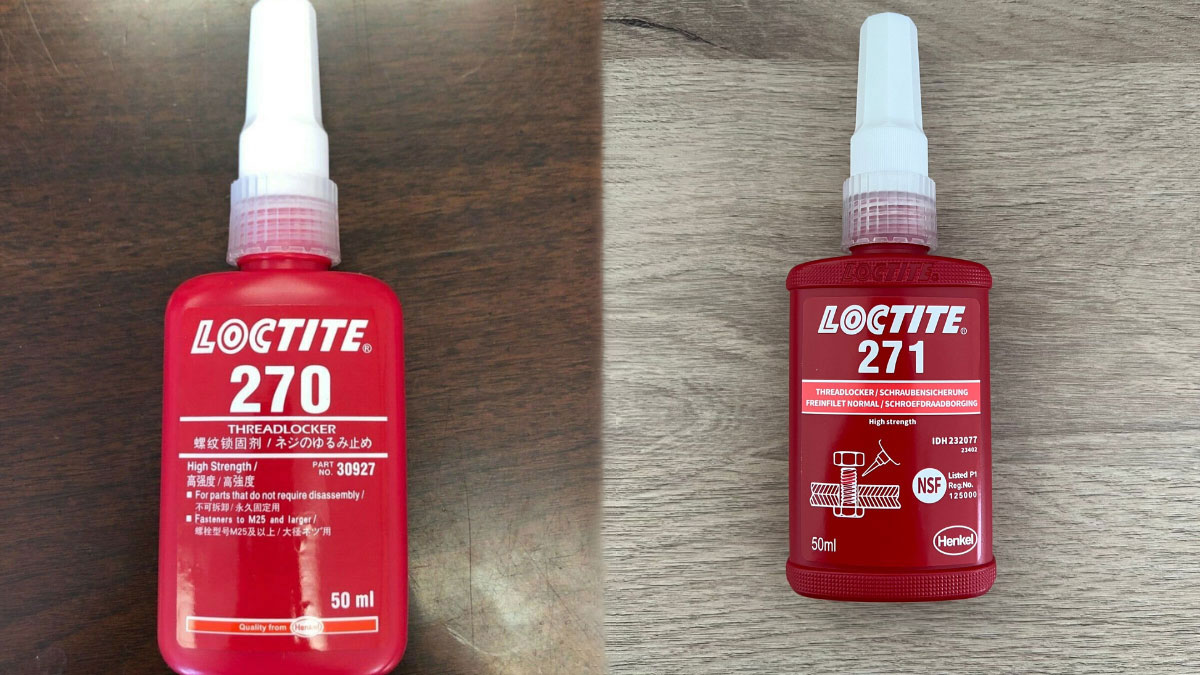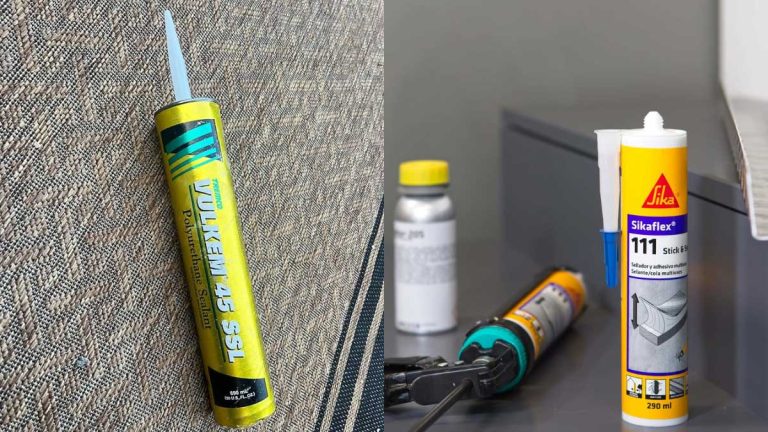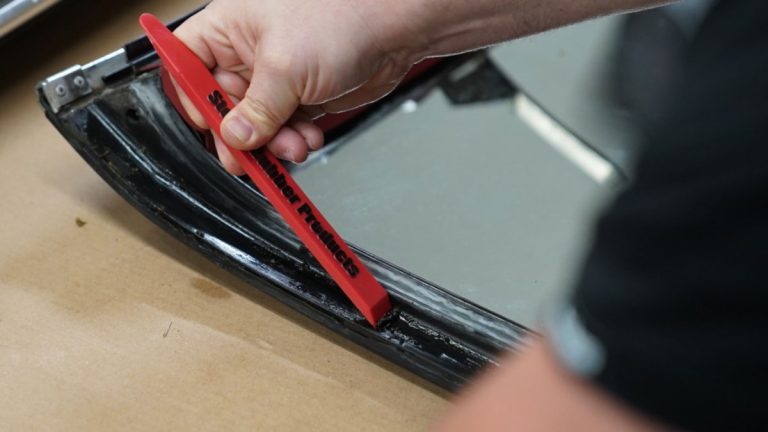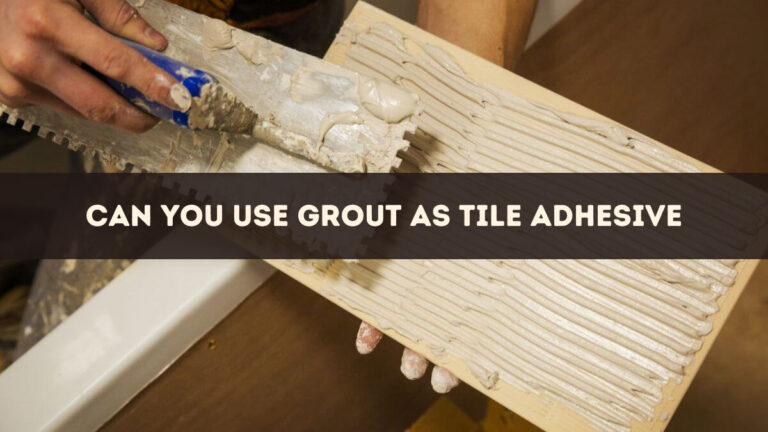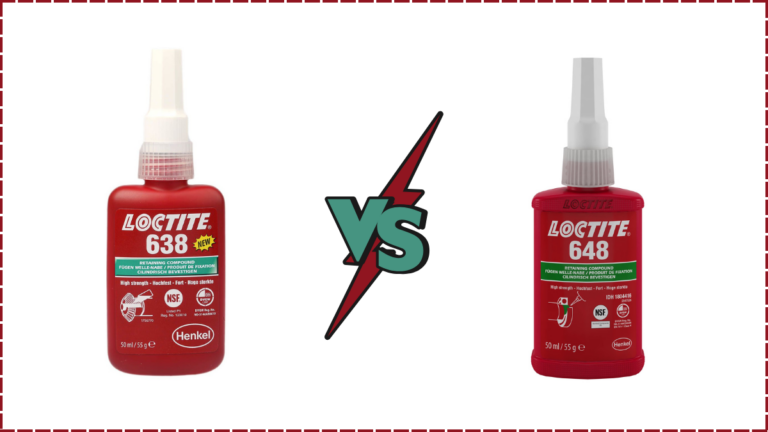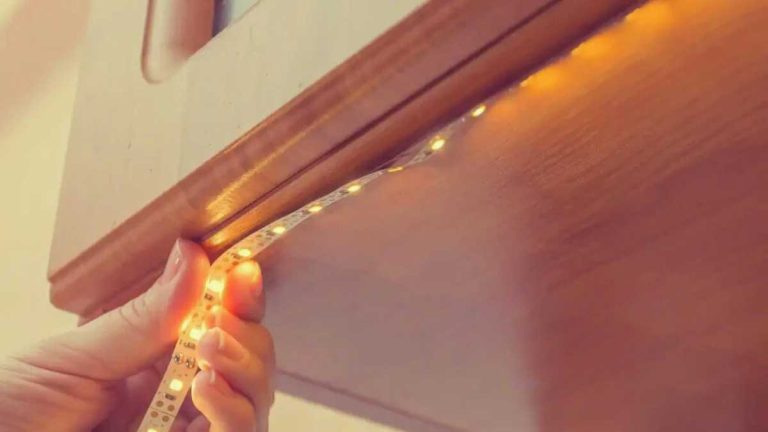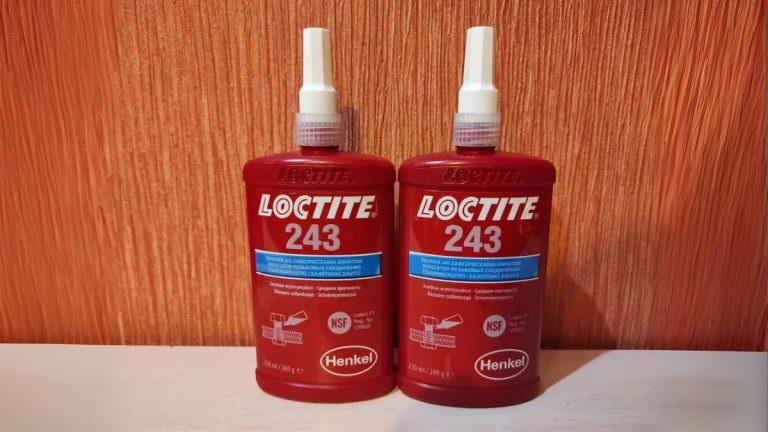Loctite 270 vs 271: Choosing the Right Threadlocker for Your Projects
When it comes to securing threaded fasteners, you need a reliable solution that ensures strength and durability. Loctite, a trusted name in adhesives, offers two popular options: Loctite 270 and Loctite 271. Both are designed to lock and seal fasteners, but understanding their differences can help you choose the right one for your project.
You’ll find that Loctite 270 and 271 both offer high-strength bonding, but they cater to slightly different applications. Whether you’re dealing with heavy machinery or everyday repairs, knowing which product suits your needs can save you time and prevent future maintenance issues. Let’s jump into the key distinctions between these two products so you can make an well-informed choice.
Key Takeaways
- High-Strength Bonding: Both Loctite 270 and 271 offer robust, high-strength bonding suitable for various applications, ensuring that fasteners remain securely in place.
- Color and Viscosity Differences: Loctite 270 (green) maintains a consistent viscosity, whereas Loctite 271 (red) has thixotropic properties, allowing it to change viscosity under shear stress.
- Application Suitability: Loctite 270 is ideal for fluid leak prevention and gap filling, making it suitable for bearing races and metal threaded assemblies. Loctite 271 is designed for heavy-duty applications, such as cylinder block bolts and transmission shafts, where high-strength bonding is critical.
- Removability: Loctite 270 creates a more permanent bond that typically requires heat for removal, making it less practical for applications needing future disassembly. Conversely, Loctite 271, while still strong, allows for easier disassembly with tools.
- Additional Features: Loctite 271 fluoresces under UV light, aiding in inspection and monitoring, a feature not found in Loctite 270, making it better suited for environments requiring regular checks.
- Choosing the Right Product: Selection depends on project requirements; use Loctite 270 for fluid sealing and gap filling and Loctite 271 for heavy-duty, high-stress applications needing a strong but potentially removable bond.
Overview of Loctite 270 and 271
Loctite 270 and Loctite 271 are high-strength threadlocking adhesives. Even though their similarities, each has unique characteristics essential for specific applications.
Key Features of Loctite 270
- Color: Loctite 270 is green, making it easily identifiable.
- Strength: It offers high strength for permanent locking, ensuring secure fastening.
- Application: Suitable for all metal threaded assemblies, often used where gap filling is essential.
- Viscosity: Loctite 270 doesn’t change viscosity under shear stress, which means it maintains a consistent application thickness.
- Use: Frequently recommended for setting bearing races due to its gap-filling capability.
- Color: Loctite 271 is red, providing clear differentiation from Loctite 270.
- Viscosity: Thixotropic properties allow its viscosity to change under shear stress, reducing run-off.
- Application: Ideal for heavy-duty applications and all metal fasteners, providing reliable adhesion.
- Monitoring: Fluoresces under UV light, facilitating easy monitoring and inspection.
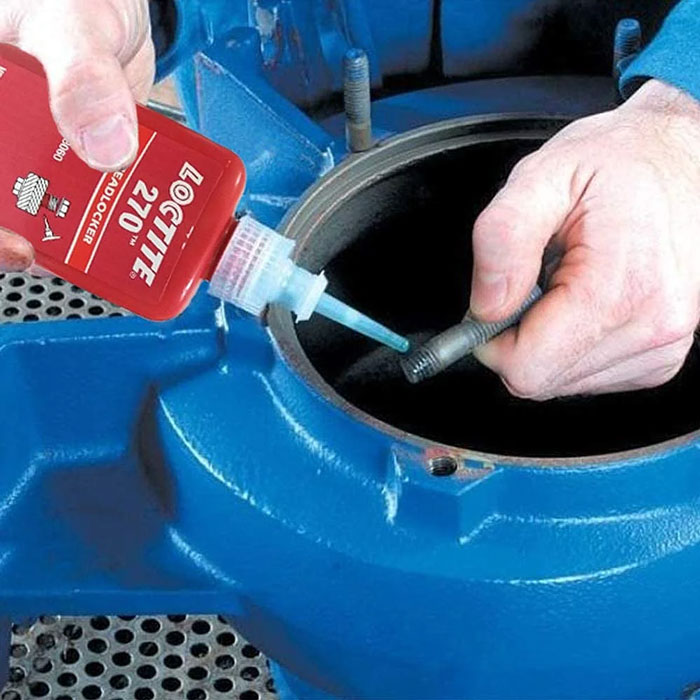
| Feature | Loctite 270 | Loctite 271 |
|---|---|---|
| Color | Green | Red |
| Strength | High strength, permanent | High strength, permanent |
| Viscosity | Consistent | Thixotropic |
| Application | Metal threaded assemblies | Heavy-duty metal fasteners |
| Special Use | Gap filling, bearing races | UV fluorescent for monitoring |
Understanding the differences between Loctite 270 and 271 ensures optimal selection for specific projects, maximizing the efficiency and longevity of metal fastenings.
Applications and Uses
Loctite 270 and 271 are high-strength adhesives tailored for specific applications. Understanding their unique characteristics can help you choose the right product for your needs, ensuring reliable and long-lasting fastener security.
Typical Applications for Loctite 270
- Primary Use: Loctite 270, often known as “green” Loctite, offers excellent sealing and locking capabilities for fasteners. It is valuable in environments prone to fluid leakage due to its superior gap-filling properties.
- Key Characteristics:
- Non-Thixotropic: The viscosity of Loctite 270 remains constant under shear stress, which ensures consistent application in various conditions.
- Colors: Green, making it distinct from other threadlockers.
- Application Scenarios:
- Bearing Races: Ensures a tight fit, preventing loosening and leaks.
- Fluid Leak Prevention: Ideal for assemblies requiring resistance to fluid penetration.
Typical Applications for Loctite 271
- Primary Use: Loctite 271 is a red, high-strength, thixotropic threadlocker. It is designed for heavy-duty, metal fastener assemblies often exposed to high stresses and vibrations.
- Key Characteristics:
- Thixotropic: The viscosity of Loctite 271 changes under shear stress, making it easier to apply and ensuring it stays in place during assembly.
- Colors: Red, easily distinguishable for high-strength applications.
- Application Scenarios:
- Heavy-Duty Usage: Ideal for assembly with air tools, cylinder block bolts, and transmission shaft bolts.
- Ring Gear Bolts: Ensures a secure and stable connection to handle high-stress scenarios.
- Inspection Aid:
- UV Fluorescence: Emits a fluorescent glow under UV light, aiding in monitoring and inspection.
| Feature | Loctite 270 | Loctite 271 |
|---|---|---|
| Color | Green | Red |
| Primary Use | Fluid leak prevention, bearing races | Air tools, cylinder block bolts |
| Viscosity | Non-Thixotropic | Thixotropic |
| Heavy-Duty Suitability | Moderate | High |
| UV Fluorescence | No | Yes |
Selecting the appropriate Loctite adhesive depends on your specific requirements. Use Loctite 270 in applications where fluid leaks are a concern, and choose Loctite 271 for heavy-duty environments requiring high-strength bonding.
Performance Comparison
Loctite 270 and Loctite 271 are both high-strength threadlockers with distinct characteristics. Understanding their performance differences can help you choose the right product for your needs.
Strength and Durability
- Loctite 270: Engineered for applications where a permanent bond is essential, Loctite 270 creates a strong and long-lasting connection. It’s often referred to as the “green” or “red” type, depending on the region. This threadlocker is perfect for securing components that should not be dismantled, such as bearing races and engine blocks.
- Loctite 271: While also a high-strength threadlocker, Loctite 271 offers a slightly less permanent bond compared to Loctite 270. Specifically designed for structural bolts, heavy machinery, and other critical applications, it provides robust performance where a strong bond is necessary yet allows for future disassembly if required. Typically red in color, it’s suitable for industrial settings.
Removability and Maintenance
- Loctite 270: Given its permanent nature, removing Loctite 270 requires considerable effort, usually involving the application of heat. This makes it less suitable for applications where maintenance or future disassembly is anticipated.
- Loctite 271: Offers ease of removability compared to Loctite 270. Though it still provides a high-strength bond, it can be dismantled more easily, providing a good balance between strength and maintenance requirements. This makes it ideal for scenarios where periodic servicing of components is necessary.
Resistance to Environmental Factors
- Loctite 270: Due to its robust formulation, Loctite 270 resists various environmental factors including fluids, high temperatures, and vibrations. This makes it an excellent choice for harsh environments where components are exposed to constant stress and movement.
- Loctite 271: Shares similar resistant properties with Loctite 270, including the ability to withstand high temperatures and vibrations. Also, it fluoresces under UV light, allowing for easy inspection and monitoring, which is crucial in environments where regular checks are essential.
| Feature | Loctite 270 | Loctite 271 |
|---|---|---|
| Primary Use | Permanent bonds | High-stress applications |
| Color | Green or red (region-specific) | Red |
| Strength | High | High (slightly less than Loctite 270) |
| Removability | Requires heat, challenging | Possible with tools |
| Fluid Resistance | Excellent | Excellent |
| Temperature Resistance | High | High |
| UV Detection | N/A | Yes |
| Common Applications | Bearing races, engine blocks | Structural bolts, heavy machinery |
Loctite 270 and 271 provide versatile solutions for securing threaded fasteners. While Loctite 270 offers a more permanent bond appropriate for components that won’t require future removal, Loctite 271 delivers high-strength yet slightly less permanent bonds, making it suitable for components needing periodic maintenance. Determine your specific needs to select the appropriate product for optimal performance and durability.
Choosing the Right Product
Choosing between Loctite 270 and Loctite 271 for your project ensures optimal performance and reliability. Understanding key factors helps you make an well-informed choice.
Factors to Consider
Chemical Composition and Properties:
- Loctite 270: Known as “Green” Loctite, this product seals fluid leaks and fills gaps efficiently. It’s ideal for applications like setting bearing races.
- Loctite 271: A red, high-strength threadlocker with thixotropic properties, Loctite 271’s viscosity changes under shear stress, unlike Loctite 270.
Application and Use:
- Loctite 270: Suited for sealing against fluid leaks and filling gaps. It’s typically not recommended for high-strength locking.
- Loctite 271: Used where a permanent bond is required in high-strength locking applications. Disassembly requires heat, usually around 450°F.
Viscosity and Flow:
- Loctite 270: Non-thixotropic, maintaining consistent viscosity under stress.
- Loctite 271: Thixotropic, with viscosity changing under shear stress.
Common Use Cases
- Loctite 270: Ideal for applications needing fluid sealing and gap-filling. Examples: Setting bearing races, metal threaded assemblies.
- Loctite 271: Best for heavy-duty applications needing a strong, permanent bond. Examples: High-stress metal fastener assemblies, environments with significant vibrations.
User Preferences
User preferences can inform the choice between Loctite 270 and 271:
- Inspection Needs: If frequent inspections are required, Loctite 271 offers UV detection, which aids in monitoring and quality control.
- Disassembly Requirements: If easier disassembly is preferred, Loctite 270 might be a better choice. It does not require high heat for removal, unlike the 271.
- Application Specificity: Loctite 270 excels in environments prone to fluid leakage, while Loctite 271 is unmatched for high-strength locking.
| Product | Color | Viscosity | Thixotropic | Application | Disassembly Temperature | Key Feature |
|---|---|---|---|---|---|---|
| Loctite 270 | Green | Uniform | No | Fluid sealing, gap filling | Not high | Suited for bearing races |
| Loctite 271 | Red | Variable | Yes | High-strength locking | 450°F | UV detectable |
Choosing the right Loctite product involves considering specific needs and application requirements, eventually ensuring project success and durability.
Conclusion
Choosing between Loctite 270 and Loctite 271 depends on your specific needs. If you need a high-strength adhesive for permanent bonds and fluid sealing, Loctite 270 is your go-to. It’s perfect for environments where fluid leakage is a concern.
On the other hand, if you’re working with heavy-duty applications that require high stress and vibration resistance, Loctite 271 is ideal. Its UV detection feature makes it easier to monitor and inspect.
By understanding the unique characteristics of each product, you can make an well-informed choice that ensures the longevity and efficiency of your metal fastenings.
Frequently Asked Questions
Is Loctite 270 permanent?
Yes, Loctite 270 is a high-strength adhesive designed for permanent locking and sealing of metal threaded assemblies. It is ideal for components that should not be dismantled.
How strong is Loctite 271?
Loctite 271 is a heavy-duty adhesive providing high-stress and vibration resistance. It is engineered for metal fastener assemblies and is suitable for applications requiring a robust, yet slightly less permanent bond compared to Loctite 270.
How long does it take for Loctite 270 to cure?
Loctite 270 typically requires 24 hours to fully cure, although initial setting occurs much sooner. Cure time can depend on environmental conditions like temperature and humidity.
Which Loctite holds the best?
For the most permanent hold, especially in heavy-duty applications like auto suspensions and frames, Loctite 271 is recommended. It provides a strong bond that requires heating to 500°F for removal.
What is the equivalent of Loctite 271?
Loctite 271 is comparable to other high-strength, permanent threadlockers. It is especially noted for its UV detection feature, making it unique for environments that need regular inspections.
What are the primary uses of Loctite 270?
Loctite 270 is best for setting bearing races and sealing threaded assemblies prone to fluid leakage. It is valued for its gap-filling capability and consistent viscosity under shear stress.
Why choose Loctite 271 over Loctite 270?
Choose Loctite 271 over Loctite 270 if the application involves high stresses and vibrations and requires easier disassembly for maintenance. Loctite 271’s thixotropic nature and UV detection feature are additional benefits for such use cases.

